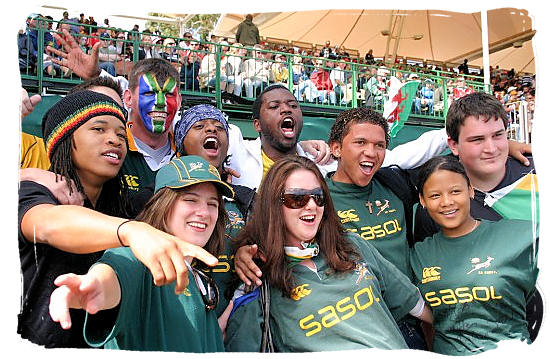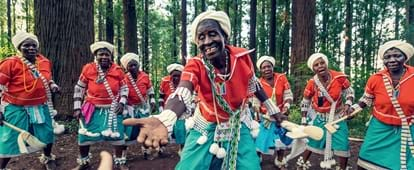The Main Principles Of South African Culture Today
The Main Principles Of South African Culture Today
Blog Article
The 6-Second Trick For South African Culture Today
Table of ContentsThe Basic Principles Of South African Culture Today All about South African Culture TodaySouth African Culture Today Fundamentals ExplainedNot known Facts About South African Culture TodayThe Greatest Guide To South African Culture TodayNot known Factual Statements About South African Culture Today
This follows with vocal singing and drum whipping. The groom and bride then meet the elders and discuss the significance of their union. An issue of importance in Zambian villages is the diing of liked ones. All participants of the village placed money, effort and time together for the burial of the deceased.During the mourning period; males stay outside your home and the women remain inside your home of the deceased. After talking concerning the dead, the village walks to the area of interment to claim their last bye-byes. Songs and dancing is an extremely essential element of the Zambian society. The different tribal systems have their very own dancing types; nonetheless, makishi prevails amongst all people.
South African Culture Today Fundamentals Explained
When it pertains to songs, drums are made use of one of the most, with a variety of drumming events. In Zambia, majority of the people are Christian; Protestant and Roman Catholic. There are little groups of Muslims and Hindus, with the rest following local indigenous tribal beliefs.

South African heritage and society is tremendously diverse, and contains several teams of individuals that each have their very own practices and beliefs. Having such a diversity of people and societies is what makes South Africa so distinct. In truth sense of the phrase, we are a rainbow nation.
South Africa has approximately three hundred thousand Portuguese individuals living in it. Making it the 7th on the list of countries with the most Portuguese people in it outside of Portugal. Portuguese is not only a society, however it is likewise a language and a nationality. Portuguese individuals stem from the country of Portugal in Europe, nonetheless, because of Portugal (like lots of various other nations in Europe) exploring the globe and dominating other nations during the 15th 20th centuries, South Africa has what we call Portuguese South African's living in it.
The Facts About South African Culture Today Uncovered
Amongst the popular attributes of the topography is a plateau that covers nearly two thirds of the center of the country. The plateau complicated rises towards the southeast, where it culminates in the Drakensberg range, component of a cliff that separates the plateau from the seaside areas. The Drakensburg includes Champagne Castle, the greatest peak in the nation.
The region north of the Witwatersrand, called the bushveld, slopes downward from eastern to west toward the Limpopo River, which forms the global boundary. The western area of the plateau, the middleveld, additionally comes down towards the west and varies in elevation in between the highveld and bushveld. Between the Drakensburg and the eastern and southerly coast, the land comes down to the sea.
Nearer the coast there is a low-lying level called the eastern lowveld. Southwest of the plateau the country comes to be progressively much more arid, paving the way to the stony desert of the Great Karroo, bordered on the eastern by the lower, much better watered plateau of the Little Karroo. Separating the completely dry southerly interior from the sandy littoral of the southerly shore and West Cape is an additional variety, the Langeberg.
Excitement About South African Culture Today
The country's racially, ethnically, and politically divided history has actually generated national and subnational symbols that still work as symbols of the country, and others symbols that are approved only by particular groups. The monoliths to white settler occupation and political supremacy, such as the Afrikaner Voortrekker ("leader") Monument in Pretoria and the Rhodes Monolith recognizing the British colonial empire builder and Cape head of state important link Cecil Rhodes, continue to be sectarian icons.
The very first modern-day inhabitants were the San ("bushman") hunter-gatherers and the Khoi ("Hottentot") individuals, that herded animals (South African culture today). The San may have existed for thousands of years and left proof of their visibility in hundreds of ancient cave paints ("rock art"). Bantu-speaking clans that were the forefathers of the Nguni (today's amaZulu, amaXhosa, amaSwazi, and vaTsonga peoples) and Tswana-Sotho language teams (today's Batswana and Southern and Northern Basotho) moved down from east Africa as very early as the fifteenth century

The two previous republics of the Orange Free State and Transvaal (South African Republic) were developed by Afrikaner inhabitants that beat and dispossessed the Basotho and Batswana. Lesotho would have been by force incorporated right into the Orange Free State without the expansion of British protection in 1869. The supreme marriage of the nation arised from the South African War (18991902) between the British and the 2 Afrikaner republics, which reduced the country to destroy at the start of the twentieth century.
Afrikaners traditionally considered themselves the only real South Africans and, while providing complete citizenship to all residents of European descent, refuted that condition to people of shade till the autonomous shift of 1994. British South Africans retain a sense of social and social link to Great Britain without damaging their identification as South Africans.
4 Easy Facts About South African Culture Today Explained
The variety and fragmentation within ethnic groups and the balance of stress in between those groups during the twentieth century avoided interethnic civil conflict. While intergroup stress over sources, privileges, and political supremacy continue to be, those conflicts are as likely to match Zulu against Zulu as Zulu against Xhosa or African against Afrikaner.
From colonial India, British merchants and administrators brought the curved metal ornamental roofings and slender shoelace work pillars that still typify the verandas of homes arounds and cities throughout the nation. Homes of worship add a vital building facet even in the tiniest towns. Along with the soaring steeples and traditional stonework of Afrikaans Dutch Reformed churches, Anglican churches, synagogues, mosques, and Hindu shrines give variety to the spiritual building scene.

Slaughtering and the brewing of typical grain beer are essential in protecting the involvement and goodwill of the forefathers that are taken into consideration the guardians of good luck, prosperity, and well-being. Indian areas preserve their indigenous culinary customs and use them on Islamic and Hindu routine useful reference and ceremonial celebrations. Afrikaners and Coloured people gather at weekend breaks and special events at multifamily barbeques called braais, where neighborhood bonds are reinforced.
Due to the fact that this was the main financial enterprise of both black Africans and white homesteaders, problem between those groups focused on the property of grazing land and animals. In 1867, the largest ruby review down payments on the planet were uncovered at Kimberley in the west main location. The wealth from those fields helped finance the exploitation of the best gold reef on the planet, which was discovered on the Witwatersrand in 1886.
Our South African Culture Today PDFs
This resulted in misconceptions and deliberate misrepresentation in the transactions of white inhabitants and government authorities with African chiefs during the colonial duration (South African culture today). In the establishment of African books, some facets of public and primarily "tribal count on" land tenure were maintained, and even in white backwoods, forms of communal period were still exercised in locations with African communities
After the democratic makeover of 1994, programs for land restitution, redistribution, and reform were instituted, yet development has been sluggish. The white minority still controls eighty percent of the land. Following farming land intrusions in Zimbabwe, the Division of Land Affairs has promised to speed land redistribution.
Report this page